In search of how our solar system formed
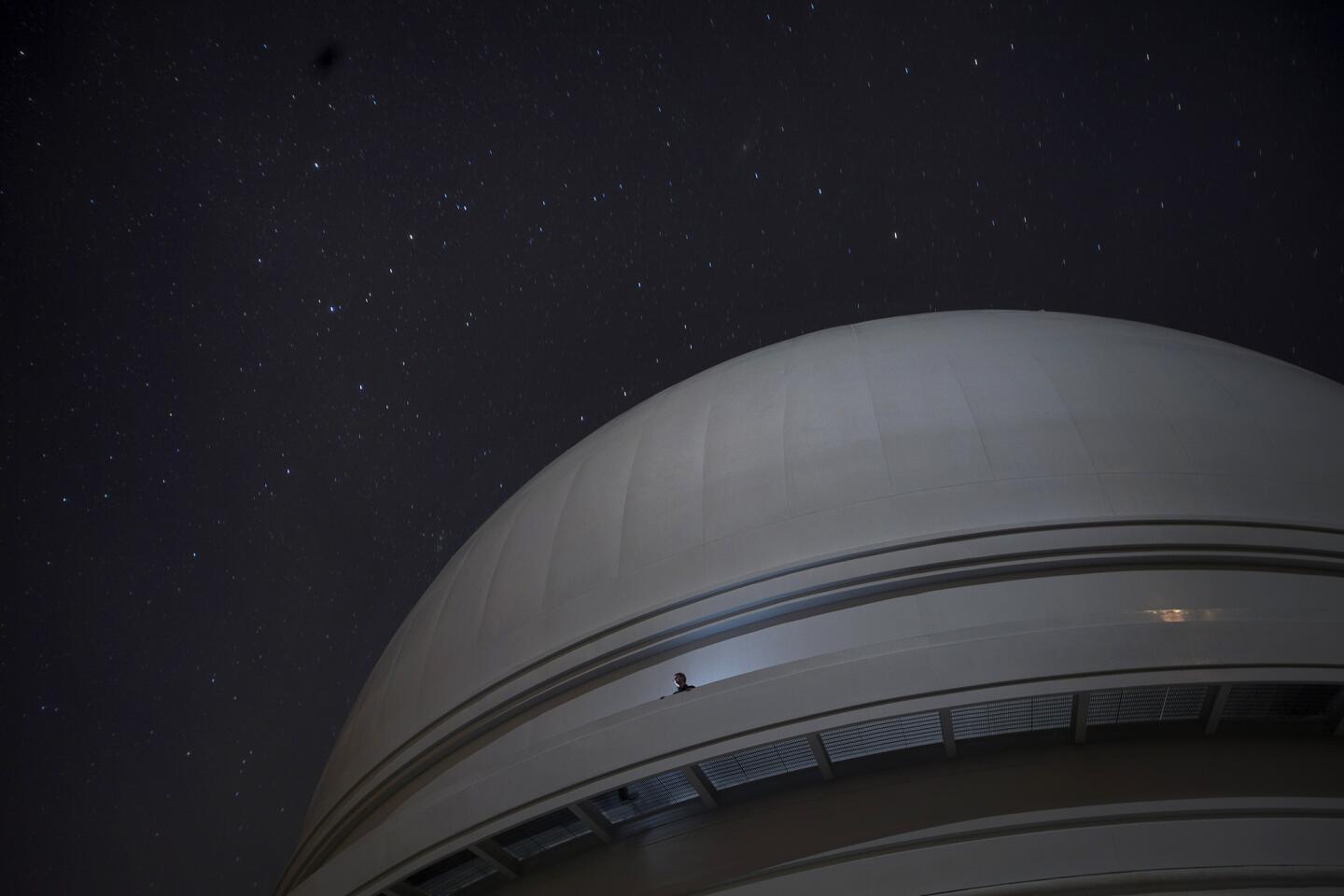
Caltech astronomer Mike Brown takes a break from observing and stands on the outer catwalk of the dome. (Don Bartletti / Los Angeles Times)
Astronomer Mike Brown is studying the planetary puzzle with the the help of the massive 200-inch Palomar telescope. “We need to find out how we got here,” Brown says.
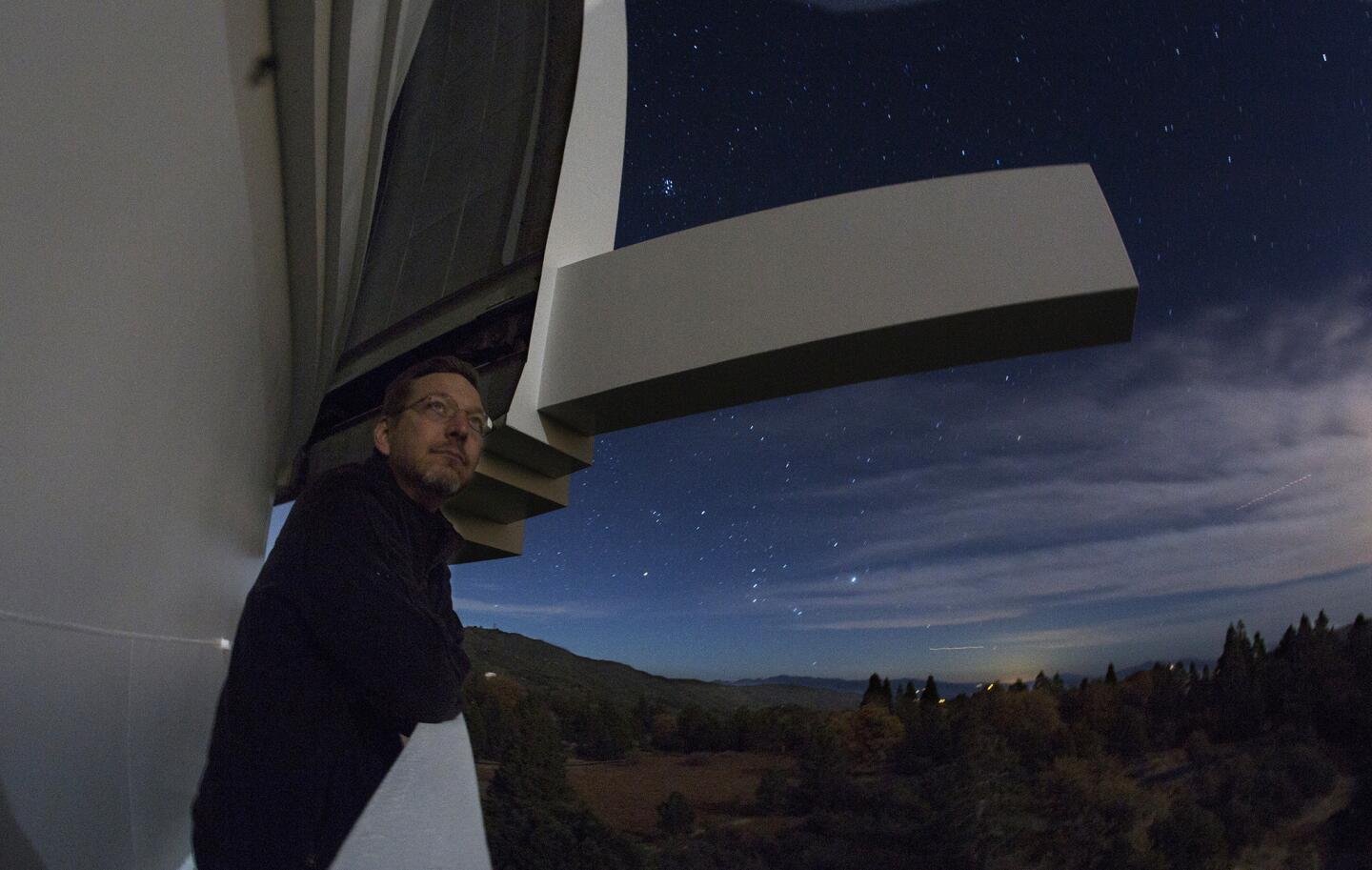
Caltech astronomer Mike Brown stands on the outer catwalk of the Palomar Observatory dome to see if clouds blowing over Palomar Mountain will hamper viewing. (Don Bartletti / Los Angeles Times)
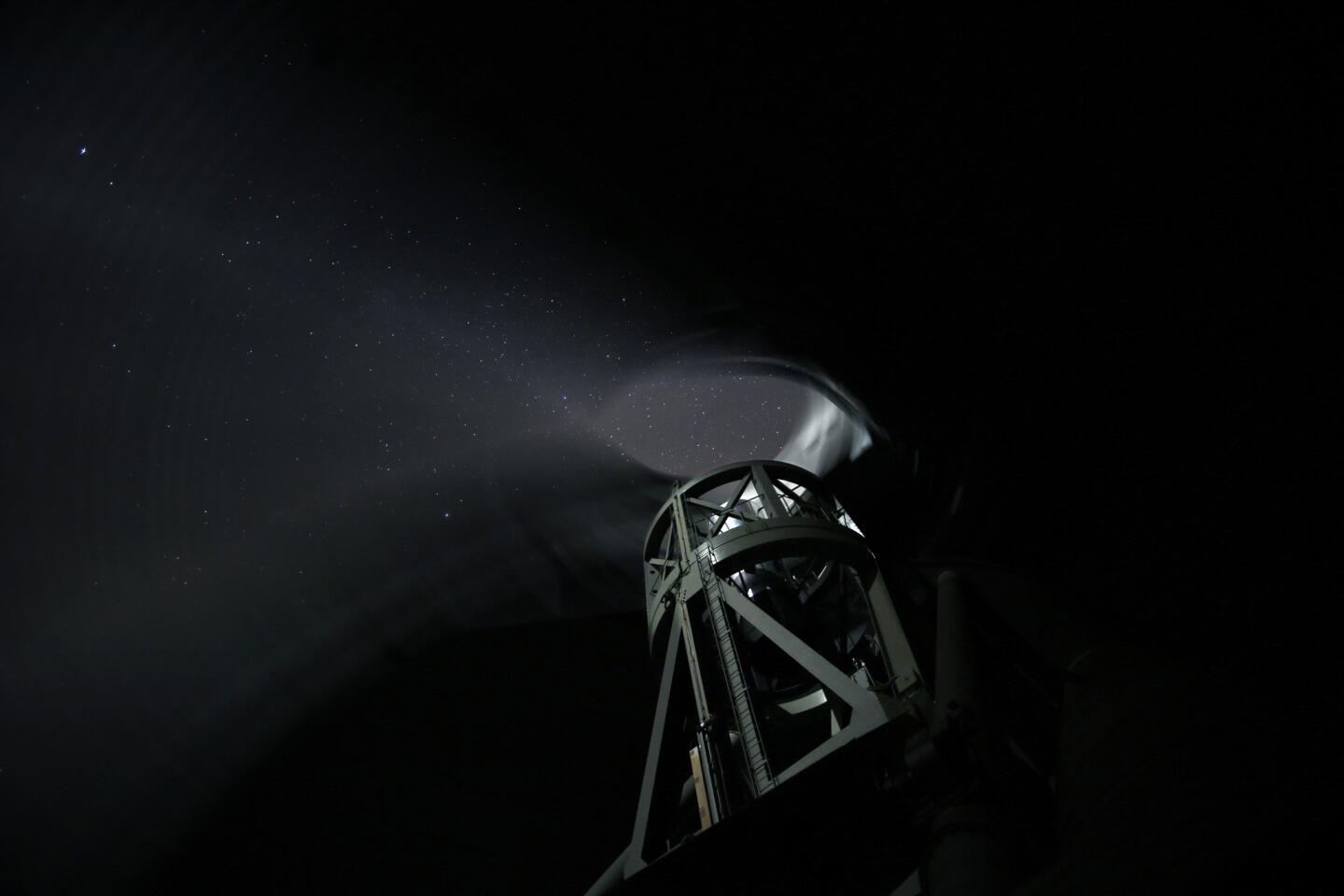
The famed 200-inch Hale telescope looks toward the night sky from inside the dome atop Palomar Mountain. (Don Bartletti / Los Angeles Times)
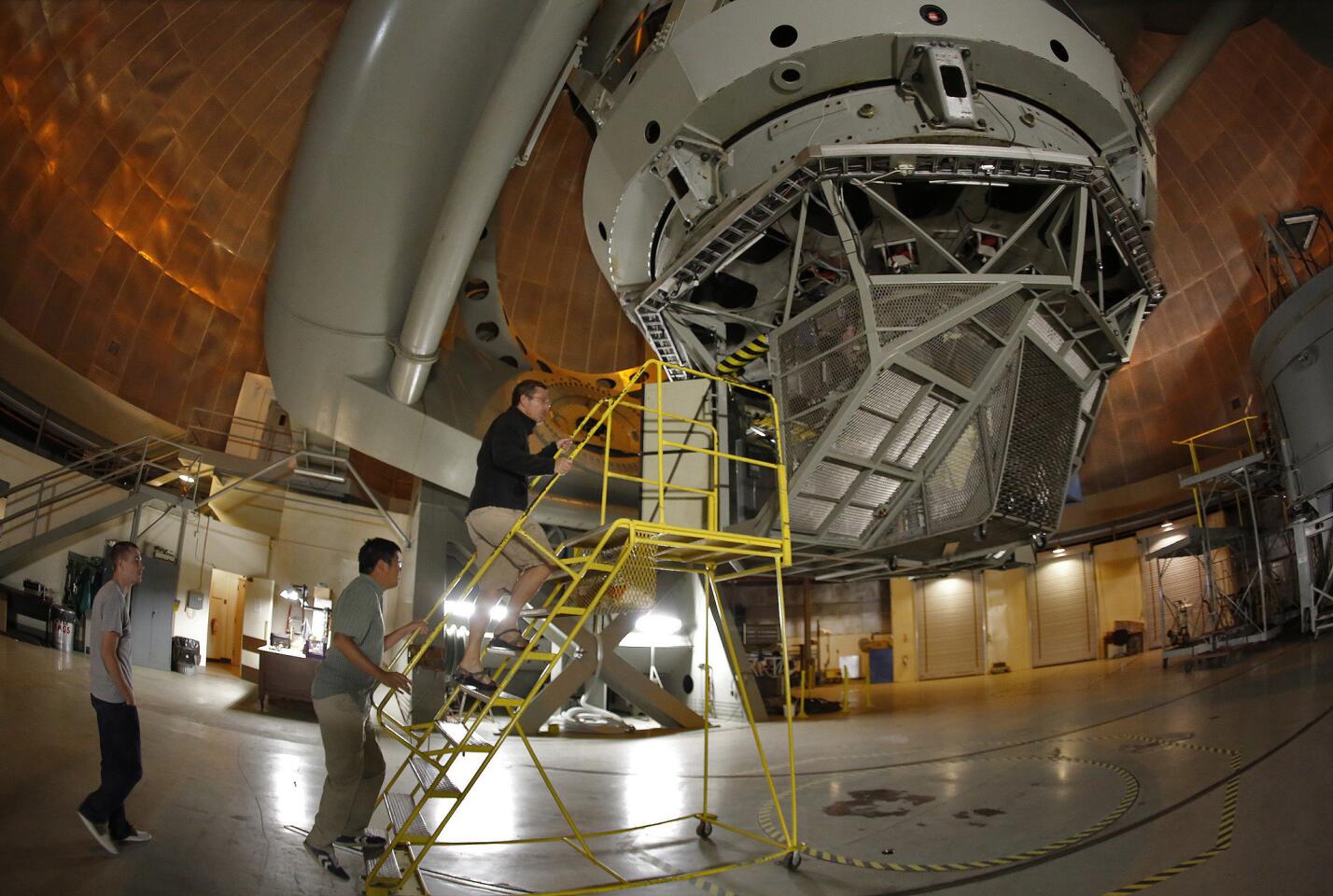
Caltech astronomer Mike Brown leads students Patrick Fischer, left, and Ian Wong, center on a tour of the Hale telescope. (Don Bartletti / Los Angeles Times)
Advertisement
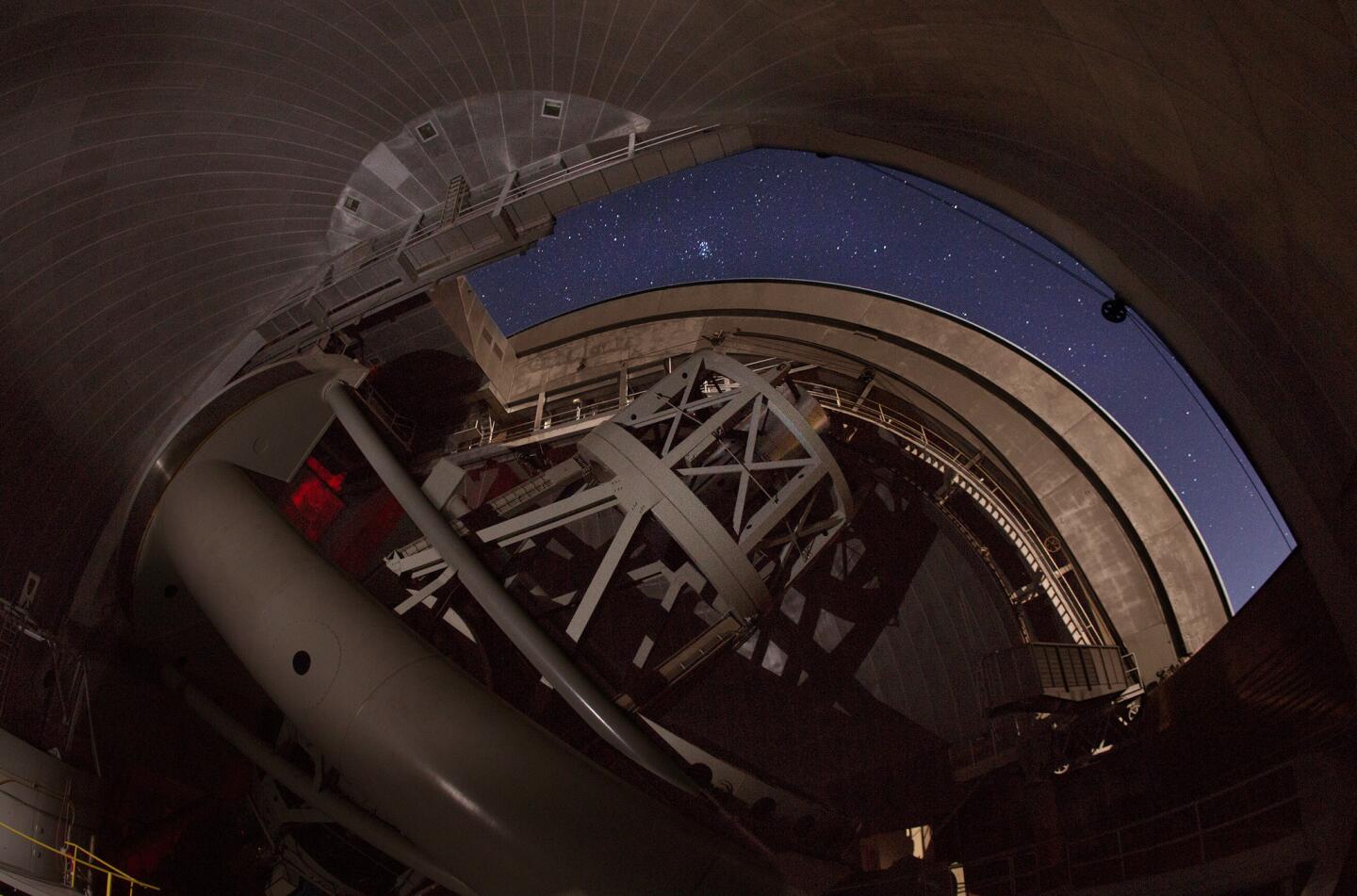
Seen from inside the Palomar Observatory dome, the Hale telescope looks toward the night sky. The brightest star cluster is the Pleiades, visible at the top. (Don Bartletti / Los Angeles Times)
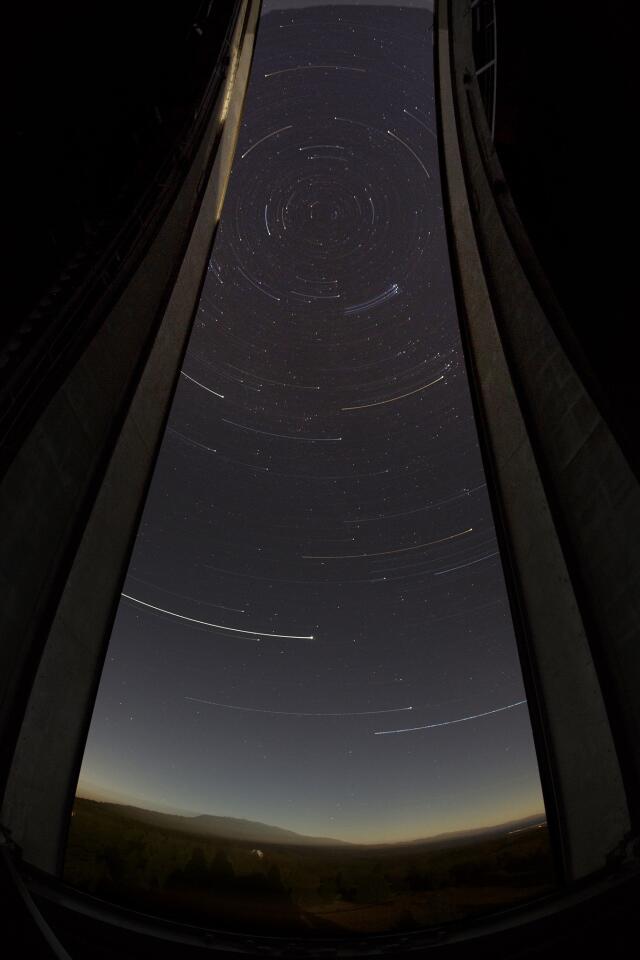
Stars in the southern sky appear as streaks during a 50-second exposure while the Palomar Observatory dome rotates. (Don Bartletti / Los Angeles Times)
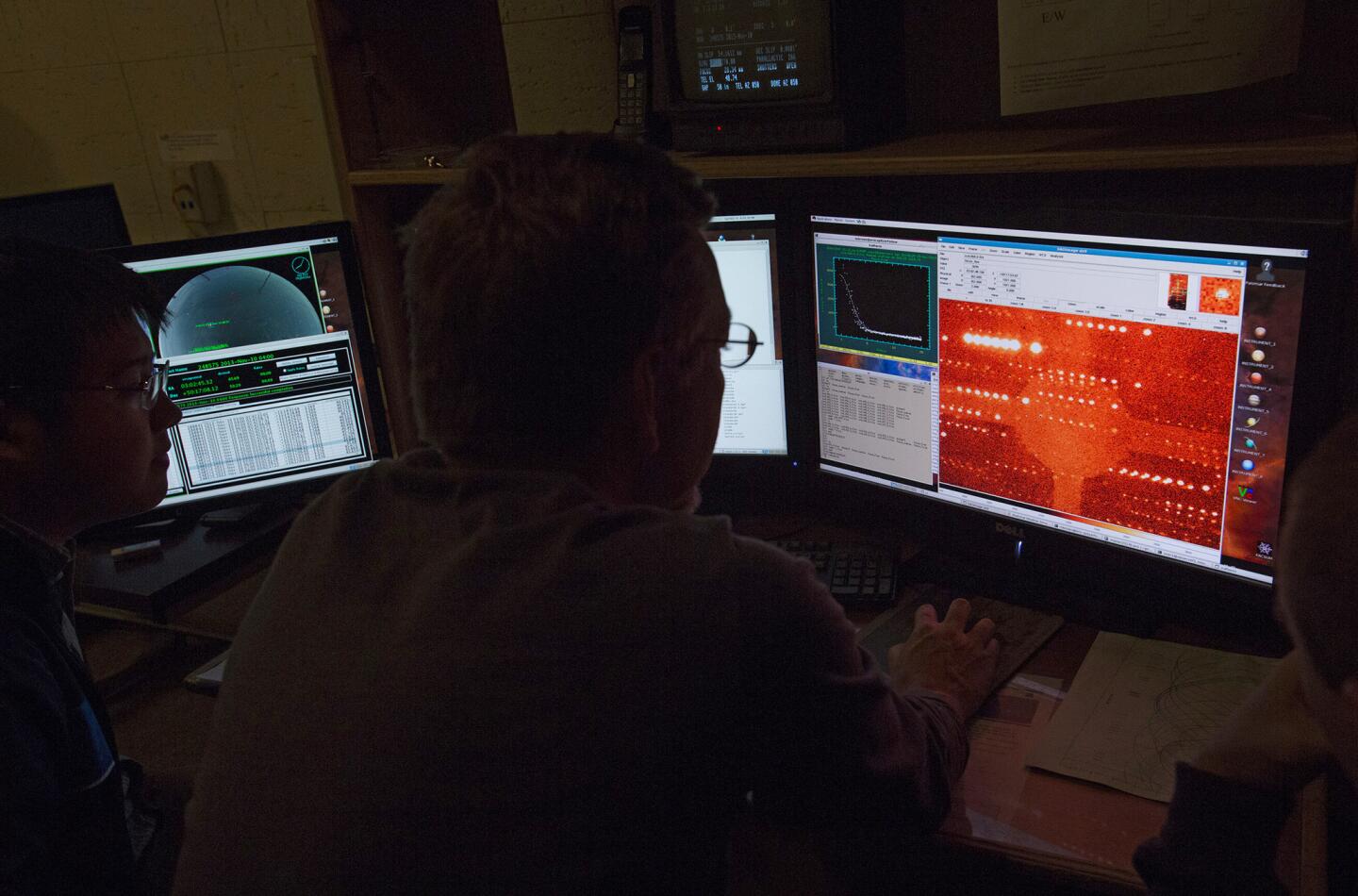
Caltech astronomer Mike Brown, center, studies a computer monitor with an infrared view of deep space. (Don Bartletti / Los Angeles Times)
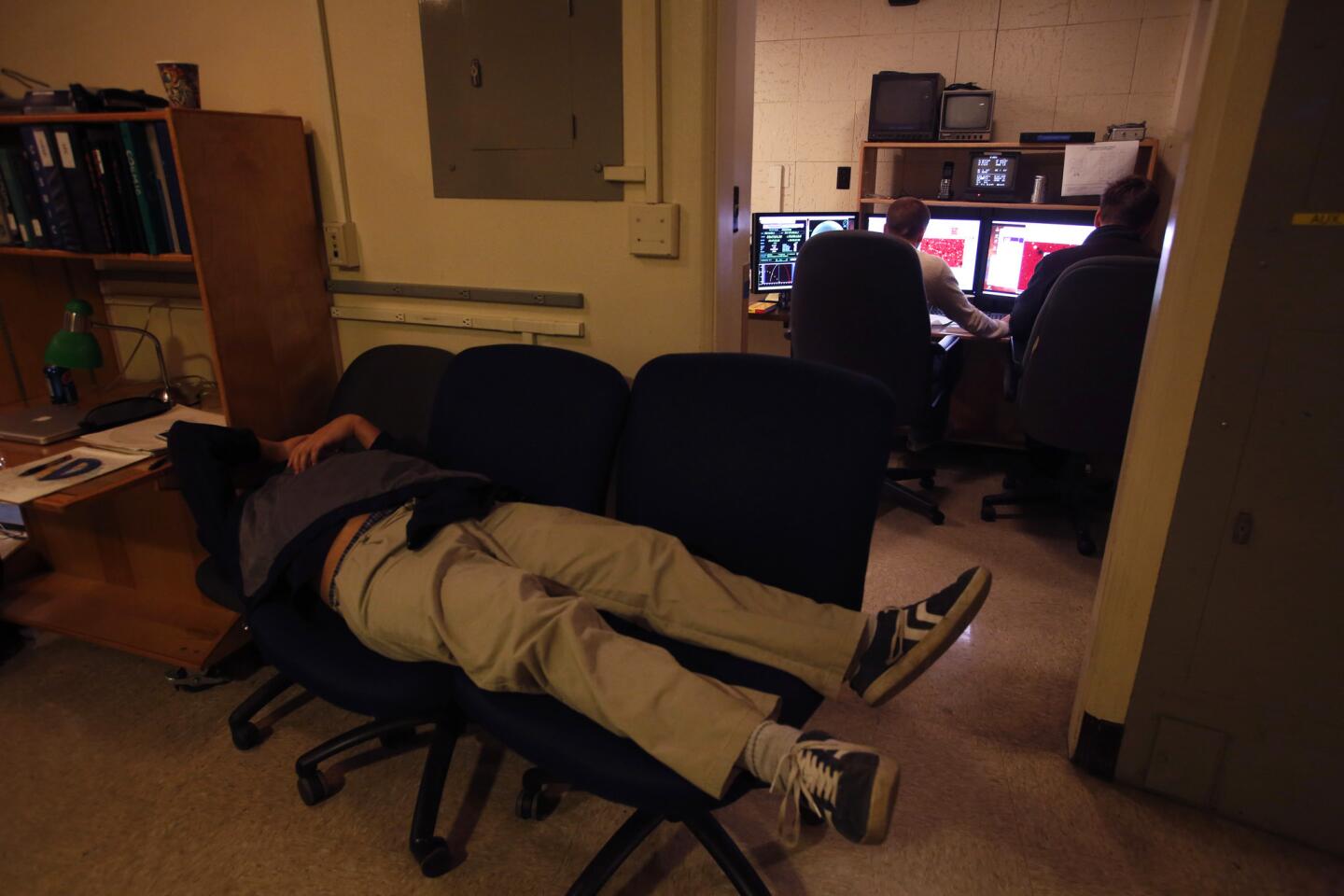
Just outside the astronomers’ viewing room, Caltech student Ian Wong takes a nap during the all-night observation session. (Don Bartletti / Los Angeles Times)
Advertisement
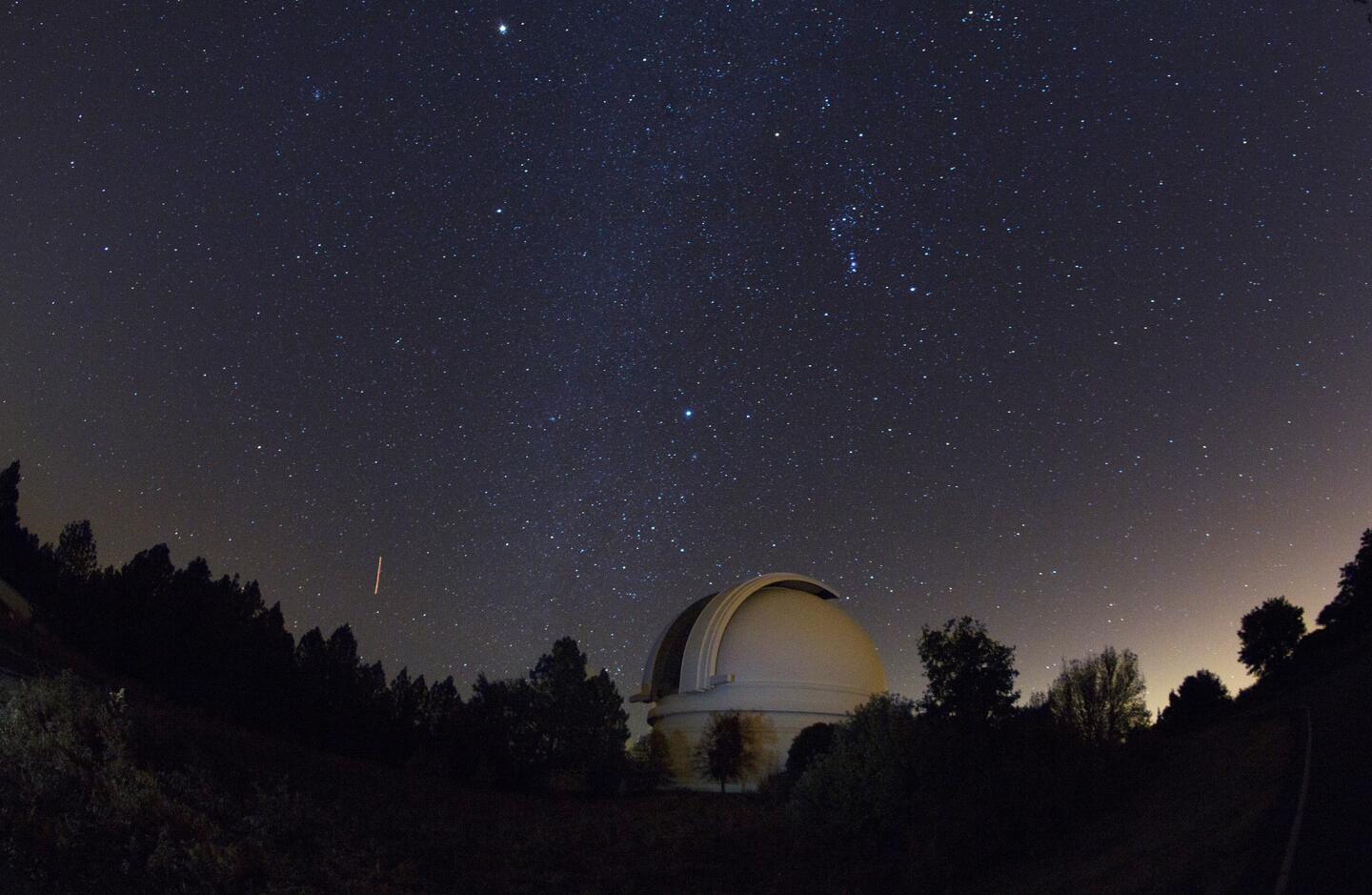
The Milky Way is the slighty brighter vertical belt of stars above the Palomar Observatory. The streak of light to the south is the trail of an airplane during the 30-second exposure. The glow to the right is light pollution from northern San Diego County urban areas. (Don Bartletti / Los Angeles Times)



